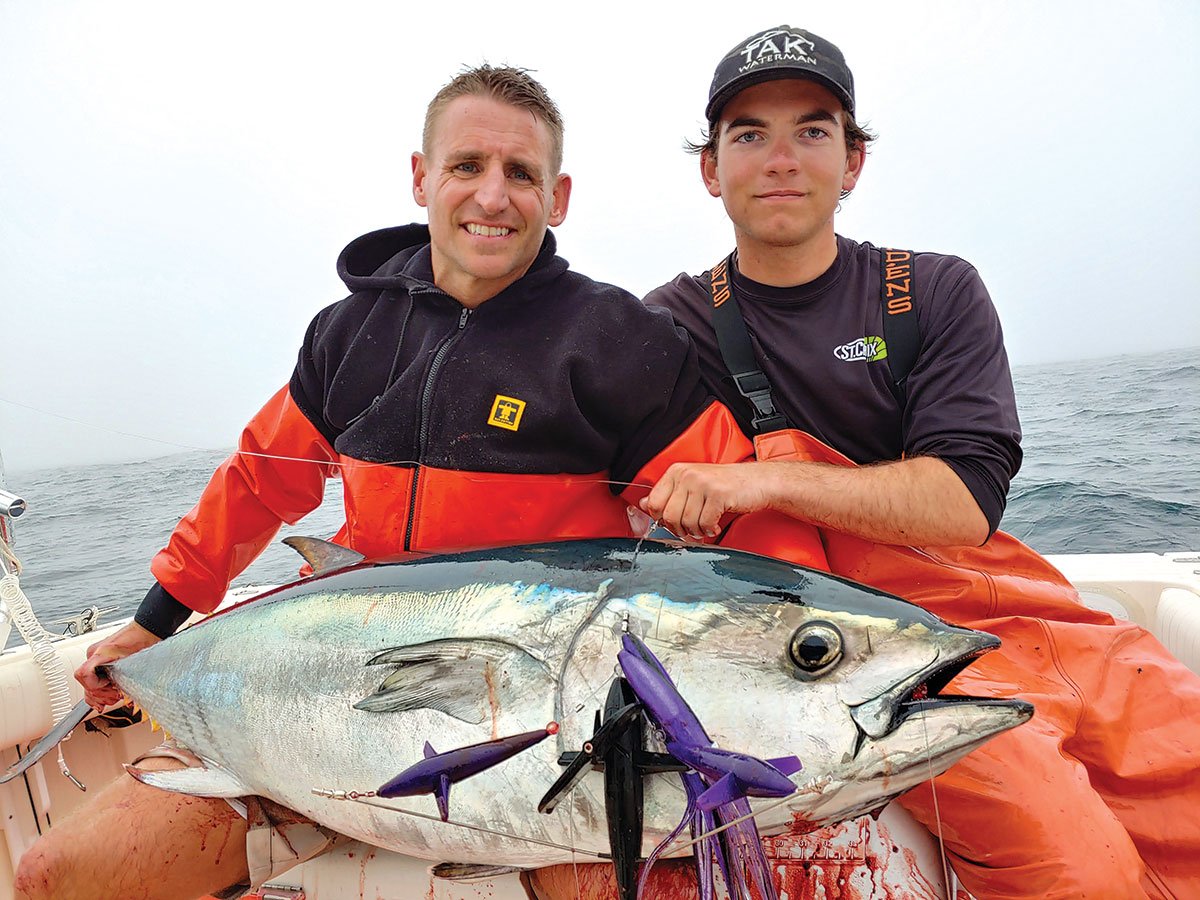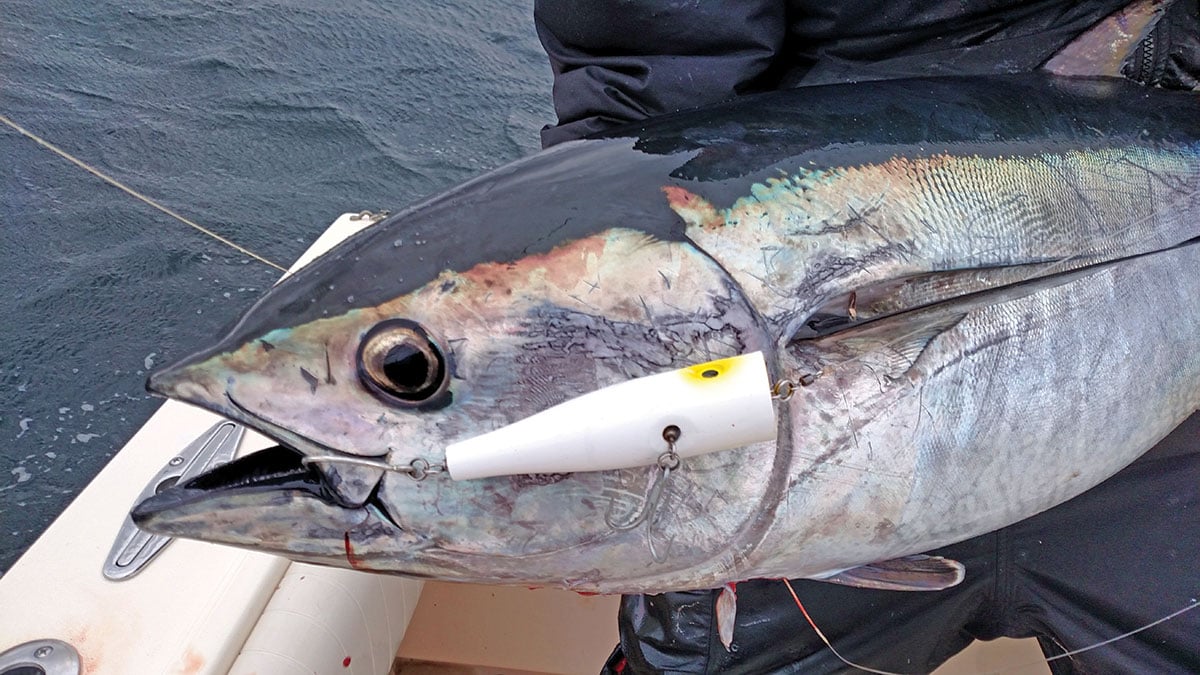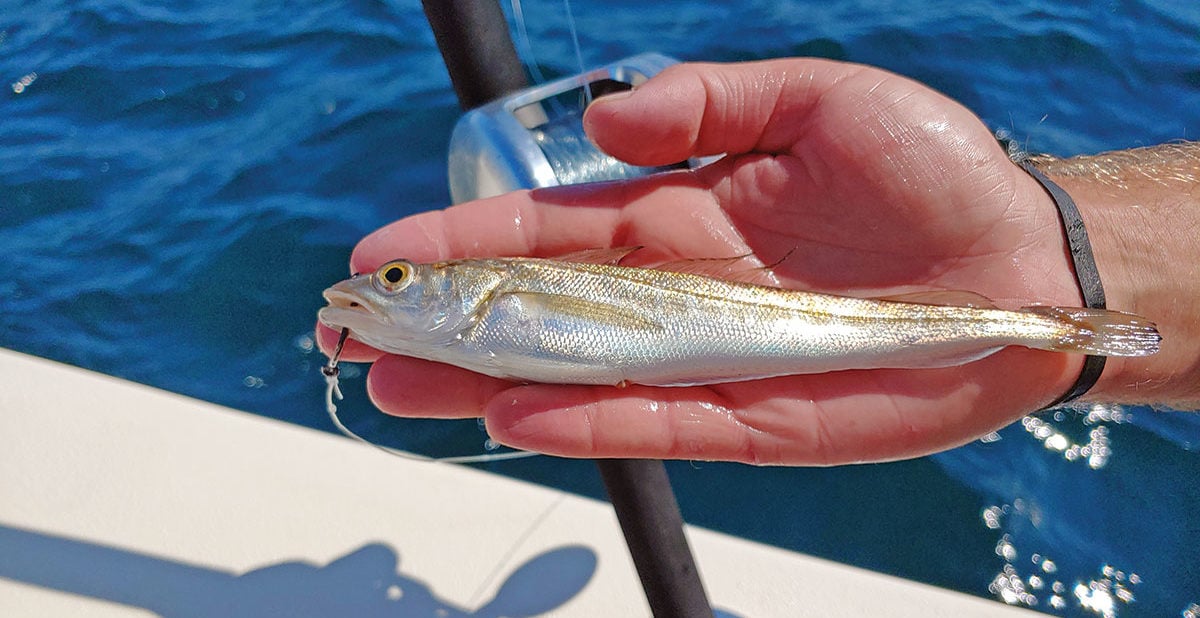
The 2019 bluefin season has been one for the ages, and it ain’t over yet!
When you hear people talk about the good old days this bluefin season of 2019 maybe someday be referred to as the good old days of the future!
The bluefin fishery this past spring and summer has been nothing short of phenomenal and now we will see if the fall continues this trend. The 2019 season started early this year with a large concentration of 40- to 100-pound tuna showing up the last week in May. What made it even more exciting was that these tuna set up within 15 to 20 miles from the beach in the Mud Hole, within relatively easy reach for any small boat with a single engine on a nice day.
To make it even more exciting giants showed up in the same area. The giants hung around for about 10 days before they pushed up to New England’s Cape.

Location Specifics
Lat/Lon
While modern GPS/Sonar and accompanying electronics often lead folks away from printed nautical charts, those furnished by the likes of Capt. Segull’s Charts offer direct intel in terms of the lat/lon of some of the most popular inshore and offshore hotspots. Some of those listed in Capt. Freda’s article that are plotted by Capt. Segull’s in their Offshore GPS New York and New Jersey chart (#OFGPS18) are as follows:
- Mud Hole – 40° 04.000′ / 73° 28.250′
- Glory Hole – 39° 57.700′ / 73° 19.500′
- Chicken Canyon – 39° 52.795′ / 73° 03.540′
- Arundo Wreck – 40° 10.399′ / 73° 40.980′
- Monster Ledge – 40° 07.900′ / 73° 34.500′
- Oil Wreck – 40° 12.502′ / 73° 46.006′
- Little Italy – 40° 01.300′ / 73° 41.000′
The Mud Hole is a famed area to fish for many species and has been for decades. It is actually a trench cut from the Hudson River outflow at a time when oceans were much lower. It ranges in depth from 90 feet along what we call the flats down to its deepest depths of around 240 feet. The Mud Hole then dumps into the Glory Hole then into the Chicken Canyon and finally into the Hudson Canyon out into the deep abyss. Some of the most well-known spots that receive most of the fishing pressure are the Arundo Wreck, the Monster Ledge, the Oil Wreck, and Little Italy. The Shark River Reef, which is just on the west side is also a very popular spot.
“Old timers” of the ‘70s and ‘80s will tell stories of true giant bluefin tuna that would be caught in the Mud Hole every fall that were feeding on the abundance of whiting that used to be there. This past spring resembled the old days again with lots of tuna, from unders to giants. In May and early June water temperatures in the Mud Hole are from 55 to 62 degrees, which is ideal for the tuna to be up high in the water column. This makes trolling a sure bet. This past spring I caught these tuna trolling Chatterlures side trackers and spreaders bars with cedar plugs trolled in the prop wash also getting their share of fish.
There was a lot of life in certain areas and when you found it your rods usually went off with a bluefin. A tremendous amount of false albacore were also in the same area and on certain days all the rods in your spread would go down. This made it difficult to get on the tuna. At times I remember not even being able to get a bar all the way out before it got hit.
Since the tuna were high in the water column blitzing sand eels it was also a great time to cast topwater poppers, stickbaits, or Hogy type lures. This is an exciting type of fishery no matter what time of year it takes place. Anytime I see tuna boiling up on the surface I am ready to have my clients cast our custom spinning rods and let them fly in their direction. I carry three of these rods rigged one with a popper, one with a stickbait, and one with a Bill Hurley sand eel bait. Almost every trip this past spring gave us opportunities to cast at surface feeding bluefin.
As the Mud Hole waters started to warm up and get turbid the bluefin pushed out to the 45-mile range from Manasquan Inlet and stayed there through the summer. For a center console with twins this was an easy run and on a calm day could be made in a little over an hour. Through June most of the tuna were still caught on the troll but as we moved into mid-July and August it was a jig bite and a phenomenal one to say the least.
Logbook Entries
On June 15 I wrote in one of my Shore Catch reports, “A really hot bluefin bite has developed east of the Princess Lump out towards the Chicken this week. There are some incredible feeds going on in the area with whales, two tones, chicks, and bait and when you locate it it’s game on. Bluefin are ranging in size from unders, to big unders, to overs to 60 inches. They are hitting side trackers and spreader bars mainly in purple or green. The tuna are also coming up on top making casting poppers and or stickbaits a viable option. Several boaters have hooked up in the last three days doing this. The early morning bite has been best with limits by 9:00am. Afternoons have been more of one-zees and two-zees.”
HMS PERMIT INFO
Vessel owners/operators who recreationally fish for or retain regulated Atlantic tuna including bluefin, yellowfin, bigeye, albacore, and skipjack, as well as sharks, swordfish, and billfish in Atlantic Federal waters (including the Gulf of Mexico and the Caribbean Sea) must obtain an HMS Angling category permit at a cost of $26.
Contact National Marine Fisheries Service at 888-872-8862 or purchase your HMS Angling category permit online at hmspermits.noaa.gov permit.
Then on July 15 I wrote “The bluefin onslaught continues as the corridor from the Princess up towards the Mako Hotel is holding large numbers of over bluefin in the 50- to 60-inch class. If you have never caught an over now is the time to get yours. It’s a jig fishery making it game on for anyone who is out there trying. There are also plenty of unders mixed in to keep you happy”.
During the 2018 season we were still getting bluefin the last week in August in the Glory Hole, and then the bluefin pushed back into the Mud Hole. They stayed there from the end of September right through October. What was holding them there was bunker and the bluefin were feeding heavily on them. What made the October fishery exciting was that it was a good topwater bite as the bluefin would corral the bunker and then blow them out of the water. Casting and working poppers was highly effective as tossing them right into the center of the melee resulted in almost instant hook-ups. When the bluefin weren’t showing it was time to turn to the jig, as well as the Bill Hurley’s, Hogys, or Ron Z lures, which were all effective.

With the way the fishery has been this year I would look for the bluefin to show up again in the Mud Hole this month. Bottom fishing boats will be the first to see them and will keep it quiet for as long as they can. One place to take a look for them will be around the Shark River Reef. With all the chum and chunks that will be in the water around the Reef you can be sure that they will be cruising through there. Maybe it will be even more like the old days with whiting reappearing.
This summer there was an abundance of whiting in the Princess area, which I believe is why the tuna held so long. It wasn’t just because of sand eels. We would snag the whiting while we were jigging and then bait them up and drop them to the bottom. It produced good results. So if this bait moves inshore as the water cools it is going to be game on.
So if you are fishing the Mud Hole be prepared and have the 30s or 50 s with you and some specialized casting and jigging rods. Don’t be surprised if you are out there trolling for albies and your rod explodes and your line is getting dumped faster than you can blink an eye. This is a telltale sign that the bluefin are there for sure.




